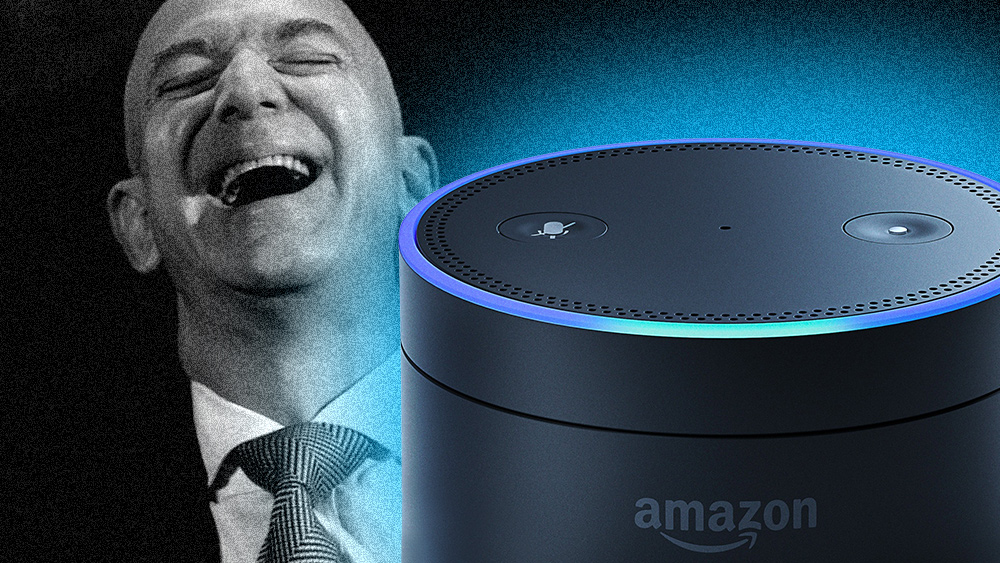Engineers miniaturize spectrometers – coming to a phone near you
08/31/2019 / By Edsel Cook

Researchers have recently presented a prototype spectrometer that integrates with a digital camera to scan substances for the presence of chemicals. The micronized version of the versatile optical instrument might one day become another common feature in mobile devices.
A spectrometer is a type of light-based sensor that searches for the presence of chemicals and identifies them. It detects an optical pattern of absorbed and reflected light that is unique to each substance.
Some of the many applications of spectrometers include identifying minerals, checking the quality of food, and determining the composition of distant stars and planets.
For the longest time, spectrometers have remained a bulky and expensive piece of equipment. The complicated instruments usually stay inside laboratories and require large vehicles for transportation over long distances.
A team at the University of Wisconsin-Madison (UW-Madison) has succeeded in simplifying a spectrometer and shrinking its size. They integrated their miniaturized instrument with a digital camera.
The researchers claimed that their miniature spectrometer retained the accuracy of a full-sized device.
“This is a compact, single-shot spectrometer that offers high resolution with low fabrication costs,” explained UW-Madison researcher Zhu Wang. He and his team released the details of their device in the journal Nature Communication. (Related: Cancer detection pen spots cancer chemicals in seconds.)
Small but powerful
The miniature spectrometer also performed hyperspectral imaging. It gathered data about every single pixel in an image for detailed analysis.
Hyperspectral imaging made it possible to identify substances and pick out an object from a complicated background. The new spectrometer spotted seams of expensive mineral in rock formations and identified certain plants in an area overrun by vegetation.
Every element possesses a spectral “fingerprint.” The pattern includes wavelengths of light that are absorbed by the substance and those wavelengths that bounce off its surface.
A spectrometer splits the reflected light coming from an object into discrete bands that match different wavelengths. It uses prisms or grating for the light-splitting process.
The photodetector of a digital camera may capture the bands of light for analysis. If the spectrometer detects the spectral fingerprint of the element sodium, its detector will record the image of two bands that correspond to wavelengths of light that measure 589 and 590 nanometers, respectively.
In human eyes, that wavelength of light appears yellow-orange. Shorter wavelengths take on blue and purple hues, while longer light waves are red. Sunlight contains all of the colors, which appear white to human vision.
Fitting an ultra-thin spectrometer on a digital camera’s photosensor
Conventional spectrometers have trouble resolving light with intermingled colors. They need a path with sufficient length to split the light beams into separate bands. Long routes translate into larger machines.
The UW-Madison team created spectrometers with sides that measured five percent of the area of a ballpoint pen’s tip. They placed these incredibly thin optical instruments directly on the photodetector of a digital camera.
They achieved a tiny size by building the spectrometer out of customized materials. The materials compelled light to reflect back and forth several times inside the spectrometer before finally arriving at the camera’s photodetector.
The internal reflections increased the length of the path that the light passed through, thereby achieving higher resolution. At the same time, they eliminated the need for extra bulk.
Further, the combination of tiny spectrometer and photodetector proved capable of hyperspectral imaging.
In a trial, the researchers overlaid separate images of the numbers 5 and 9. The projection tricked the human eye into thinking it was a single image.
Their spectrometer saw through the optical trick. It successfully resolved the original images from the overlaid projection.
The next step for the technology is boosting the spectral resolution. They also want to enhance the clarity and crispness of the images.
Sources include:
Tagged Under: breakthrough, devices, digital camera, future science, future tech, gadgets, goodtech, innovation, inventions, lab instruments, mobile devices, optical sensor, Smartphones, spectrometers
RECENT NEWS & ARTICLES
COPYRIGHT © 2017 INFORMATIONTECHNOLOGY.NEWS


















